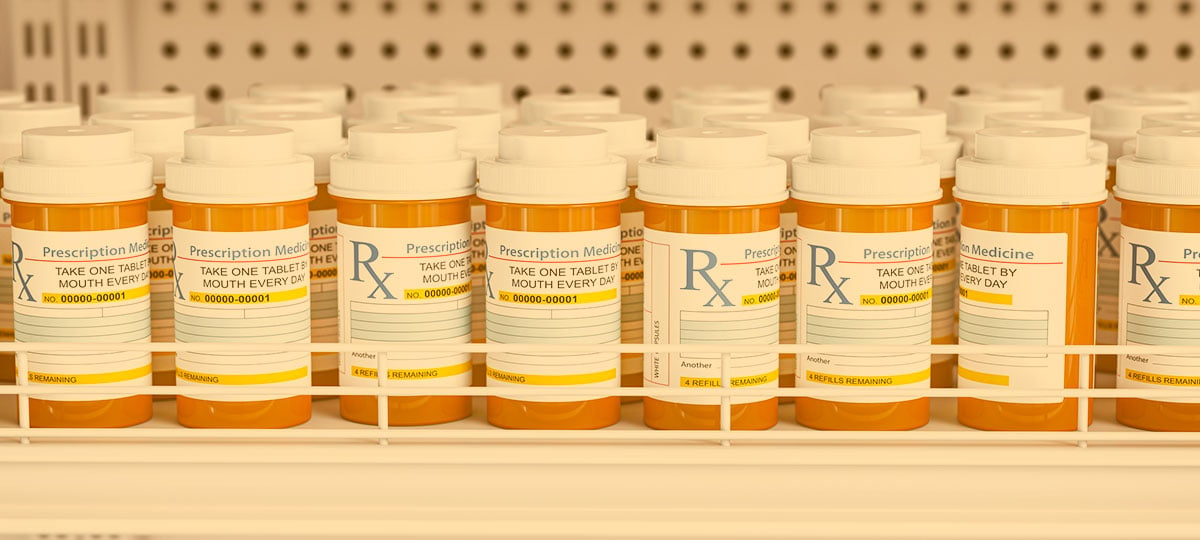
The old drug discovery model is collapsing under its own weight. Developing a new medicine often takes longer than a decade and costs billions, with most candidates never making it to market.
AI is rewriting the process. It can generate new molecules, simulate how they behave in the body, and run thousands of virtual tests before a single experiment is run in a lab. It’s already predicting clinical outcomes, improving patient selection, and modeling protein structures with near-experimental accuracy. Together, these capabilities are making drug development faster, cheaper, and more precise.
Rentosertib from Insilico Medicine is the first drug where both the target and molecule were discovered using AI. The drug is in Phase II trials and could soon move into Phase III, where it could become the first AI-designed medicine to pass late-stage clinical testing.
Rentosertib is only one signal of a larger shift. From generative chemistry to predictive trial design, from protein modeling to autonomous labs, AI is reprogramming how new medicines are made. The question isn’t whether it will transform drug discovery, but how quickly teams can adapt.
Generative Chemistry Expands the Search for New Molecules
The first step in drug discovery is designing molecules. Until recently, that meant inching through a narrow set of known chemical structures, then tweaking and testing variations in the lab. AI has moved the process from tweaks to leaps while designing molecules never thought of by humans.
Generative systems can propose novel compounds, simulate their interactions with biological targets, and refine designs in silico (via simulations or algorithms rather than in a physical lab). That opens up vast new chemical spaces and collapses timelines that once stretched for years.
Insilico’s GENTRL platform generates and ranks molecular candidates virtually, dramatically shortening the path to validation. Research published in Cell Reports Medicine shows that it designed new DDR1 kinase inhibitors in just 46 days. Exscientia and Sumitomo Dainippon Pharma went further in creating DSP-1181, the first AI-designed drug to enter clinical trials. The discovery phase lasted 12 months versus the usual four or five years.
Some AI-first biotechs are now generating thousands of candidate molecules per year, creating pipelines that are faster and broader than anything the industry has seen.
What Does This Mean for Developer Hiring?
Generative chemistry is changing the skills needed by developer teams. Rather than replacing coders, AI drug discovery is creating demand. Companies need health tech developers who can bridge code and chemistry. This means finding engineers who are fluent in machine learning, cloud computing, and data pipelines, but also able to work with complex molecular and biological datasets.
Progress depends on people as much as platforms. Here are the in-demand roles emerging as generative chemistry accelerates:
- ML/AI engineers who design and train generative models.
- Bioinformatics software engineers who manage genomic and molecular data.
- Computational chemists with coding expertise to build drug-design algorithms.
- Platform and integration engineers who connect AI tools with lab and cloud systems.
-
Validation engineers to ensure models are reliable and compliant.
Predictive Trial Design Changes the Pace of Development
Clinical trials consume most of the time and cost involved in drug development. Meanwhile, recruitment hurdles and protocol changes can bring progress to a crawl.
AI is breaking down these bottlenecks. Machine learning models can improve patient selection, forecast outcomes, and even simulate trial scenarios before anyone is enrolled.
A study published in PLOS ONE showed that an AI system matched cancer patients to appropriate phase 1 oncology trials with nearly 78% accuracy. This task normally requires weeks of manual screening and can delay trial recruitment. Meanwhile, Sanofi and other major pharma companies are using digital twin models — virtual patients trained on real-world data — to test trial designs before bringing in human participants. These approaches can reduce costs, improve safety, and streamline study timelines.
Together, these advances hint at a future where trials are faster, cheaper, and more precise. For patients with rare conditions or limited treatment options, that could mean getting access to life-saving medicines years earlier than today’s system allows.
What This Means for Hiring Tech Talent
Predictive trial design is creating fresh demand for developers who can bridge data science, clinical knowledge, and regulatory compliance. Developers need fluency in machine learning and cloud-scale systems, literacy in data privacy and clinical standards, and the communication skills to collaborate with clinicians, statisticians, and regulators.
Roles emerging in this space include:
- AI/ML engineers who develop models for patient-trial matching, outcome prediction, and virtual patient simulations
- Clinical data scientists who integrate EMR, genomic, and real-world datasets into predictive systems
- Data engineers who build pipelines for messy or siloed clinical data
- MLOps specialists to ensure AI models run reliably and traceably in production
- Clinical informatics engineers to translate trial protocols into software systems
-
Simulation specialists who design and validate digital twins for pre-enrollment testing
Structure-Led Discovery Unlocks New Frontiers
Proteins are the machines of biology. They control everything from how cells grow to how diseases spread. For decades, figuring out their 3D shapes was painfully slow. Each structure could take years to map and cost millions of dollars. As a result, most of the human body’s proteins remained a mystery.
AI changes that. DeepMind’s AlphaFold can now predict protein structures with near-lab accuracy — and do so in minutes. A global benchmark test published in Nature shows that AlphaFold provided highly accurate results that outperformed competing approaches at an unprecedented scale.
The AlphaFold database now holds over 200 million predicted structures, covering nearly every known protein. For the human body alone, structural coverage jumped from less than half to more than three-quarters, opening doors to thousands of drug targets once considered “undruggable”.
And this isn’t just academic progress. Pharma companies are using AlphaFold models to discover new binding sites, validate targets, and design next-generation therapies faster than ever before. Work that once took years can now be completed in days.
What This Means for Developer Hiring
AI breakthroughs like AlphaFold are transforming developer teams in pharma and biotech. Health tech companies need developers who can bridge software and biology, handle massive 3D datasets, and integrate AI predictions into discovery pipelines.
The most sought-after roles include:
- Bioinformatics software engineers who are fluent in Python, R, and protein structure toolkits
- Structural bioinformatics specialists who are skilled at 3D molecular modeling and visualization
- ML/AI engineers to train and deploy predictive models on protein datasets
- Drug design informatics scientists for applying structure-based screening tools
-
Data scientists with strong foundations in molecular biology and chemistry
What to Look for in AI Drug Discovery Developers
Technical firepower alone isn’t enough to succeed in drug development. The best teams blend engineering depth with scientific fluency and the ability to build AI systems that scientists and regulators can trust. Here’s what stands out:
- Technical depth in ML and cloud computing: Fluency in Python, R, TensorFlow, and PyTorch, plus experience working with large-scale biomedical datasets.
- Domain knowledge in biology and chemistry: An understanding of drug development and pharmacology to translate scientific problems into code that matters.
- Experience with explainable, compliant AI: The ability to design interpretable systems that meet the expectations of regulators and clinicians.
- Cross-disciplinary communication: The skill to collaborate with scientists, statisticians, and business leaders and make complex insights usable.
-
Continuous learning: A mindset of staying current with AI techniques and drug discovery science as each field evolves.
For companies already investing in healthcare app development and research, these qualities are essential for building platforms that keep pace with the science.
The Future of Drug Discovery Will Be Written in Code
AI is no longer an experiment. It’s becoming the engine driving new medicines to market. Molecules are generated by algorithms, clinical trials are modeled on digital patients, and once-unsolvable protein structures are now unlocked in minutes. The next breakthrough won’t be by chance but rather by coding it into existence.
But algorithms alone don’t deliver drugs. You also need people. The companies that bridge biology, data, and engineering will become tomorrow’s leaders in using AI to create life-saving treatments.
The next era of drug discovery is already here. The only question left is who will build the teams that put AI to work.
Keep Moving Forward with X-Team’s Health Tech Talent Solutions
Selecting the right healthcare app development service is crucial for creating innovative solutions. Whether you’re targeting a broad wellness audience or focusing on medical professionals, the right partner can help you navigate the complexities of the health tech industry.
When you work with X-Team, you gain access to highly skilled developers specializing in healthcare mobile app development and more. Our experts integrate seamlessly into your workflows, enabling you to focus on delivering exceptional patient experiences and meeting your organization’s goals.
Learn how X-Team can meet your on-demand healthcare engineering needs.
TABLE OF CONTENTS



